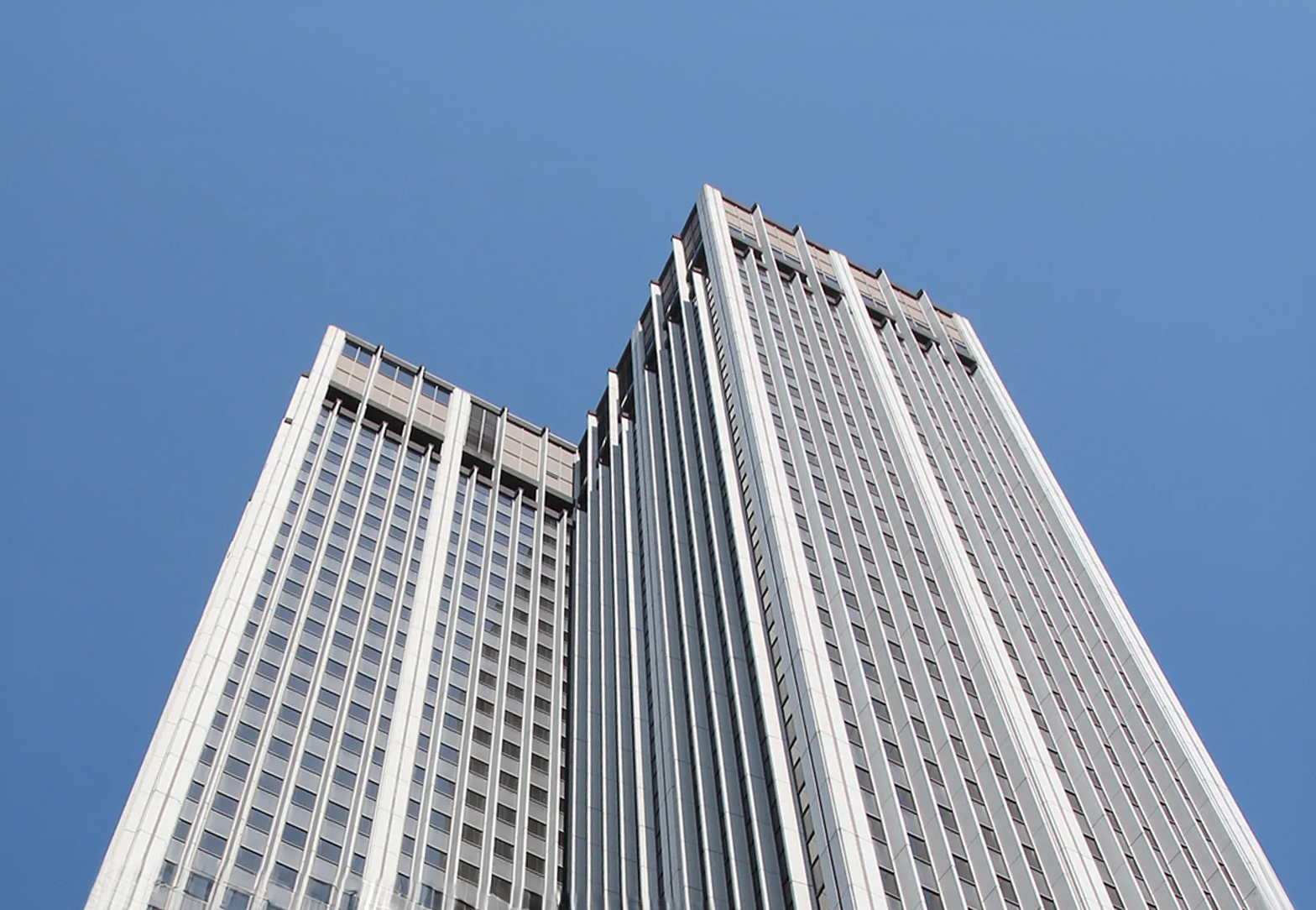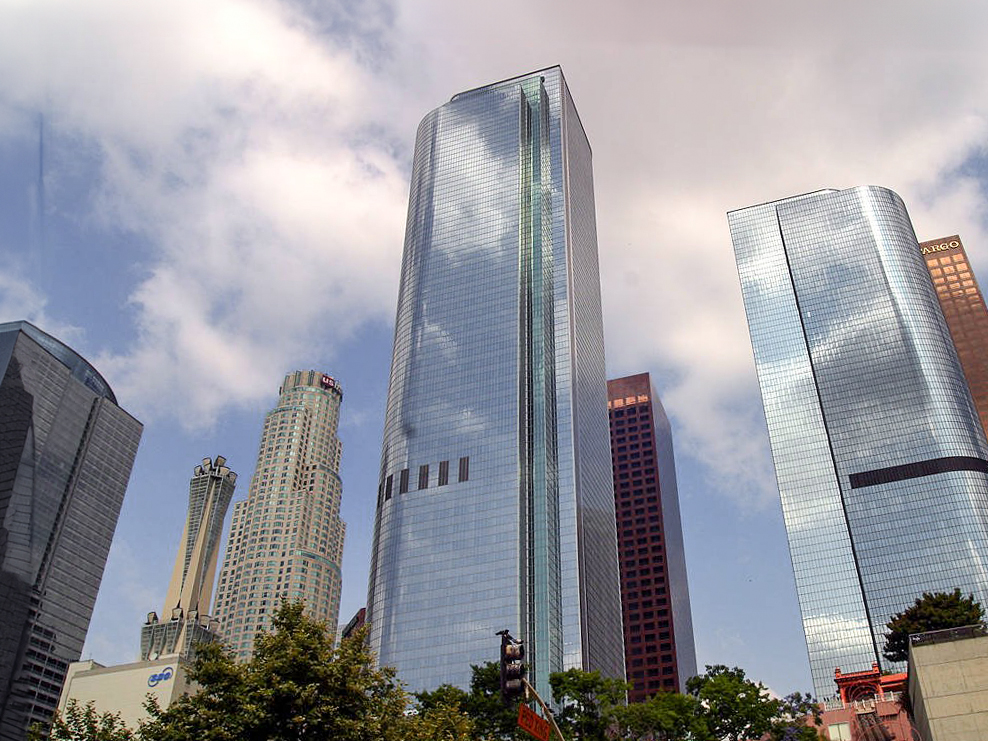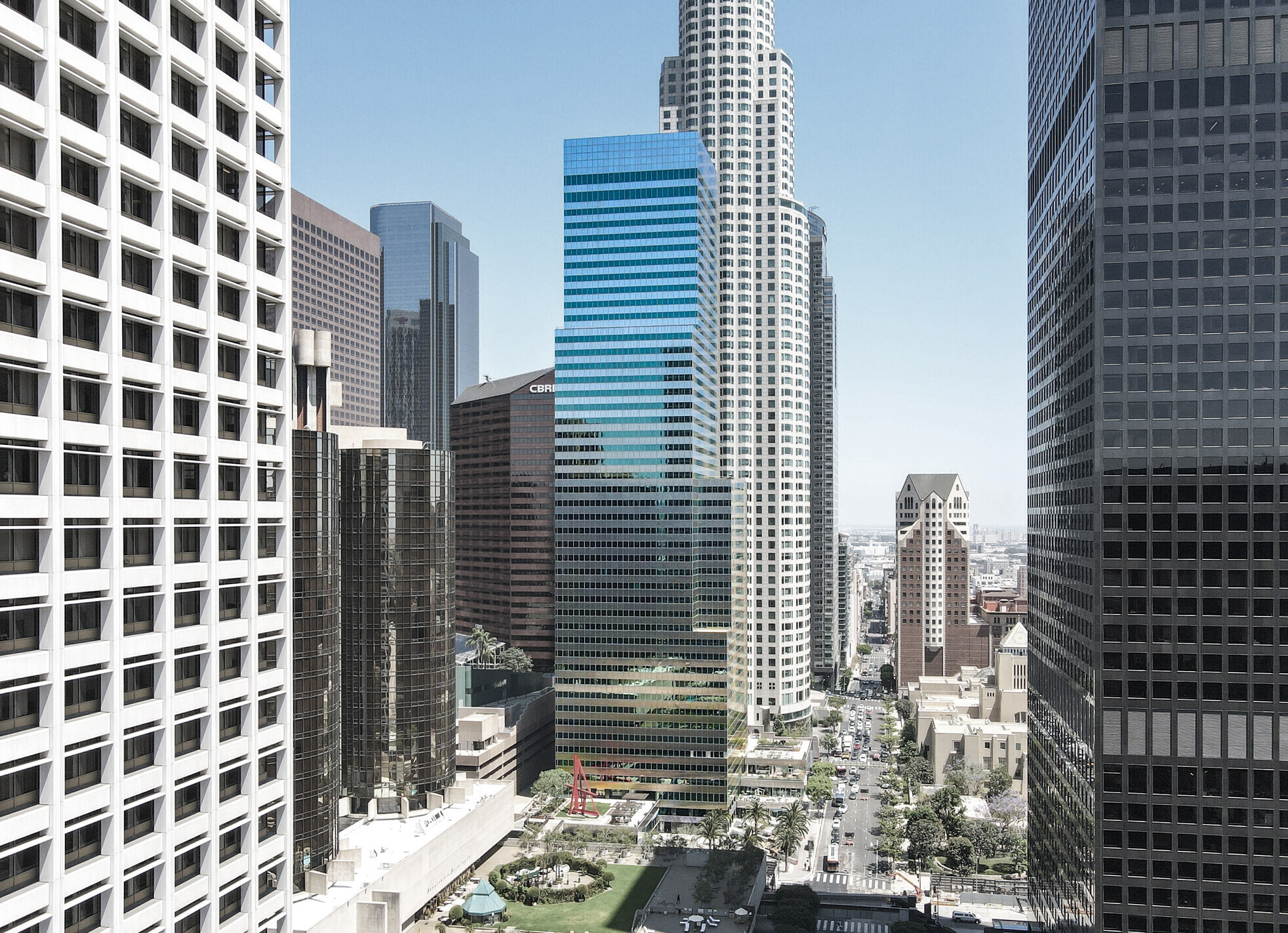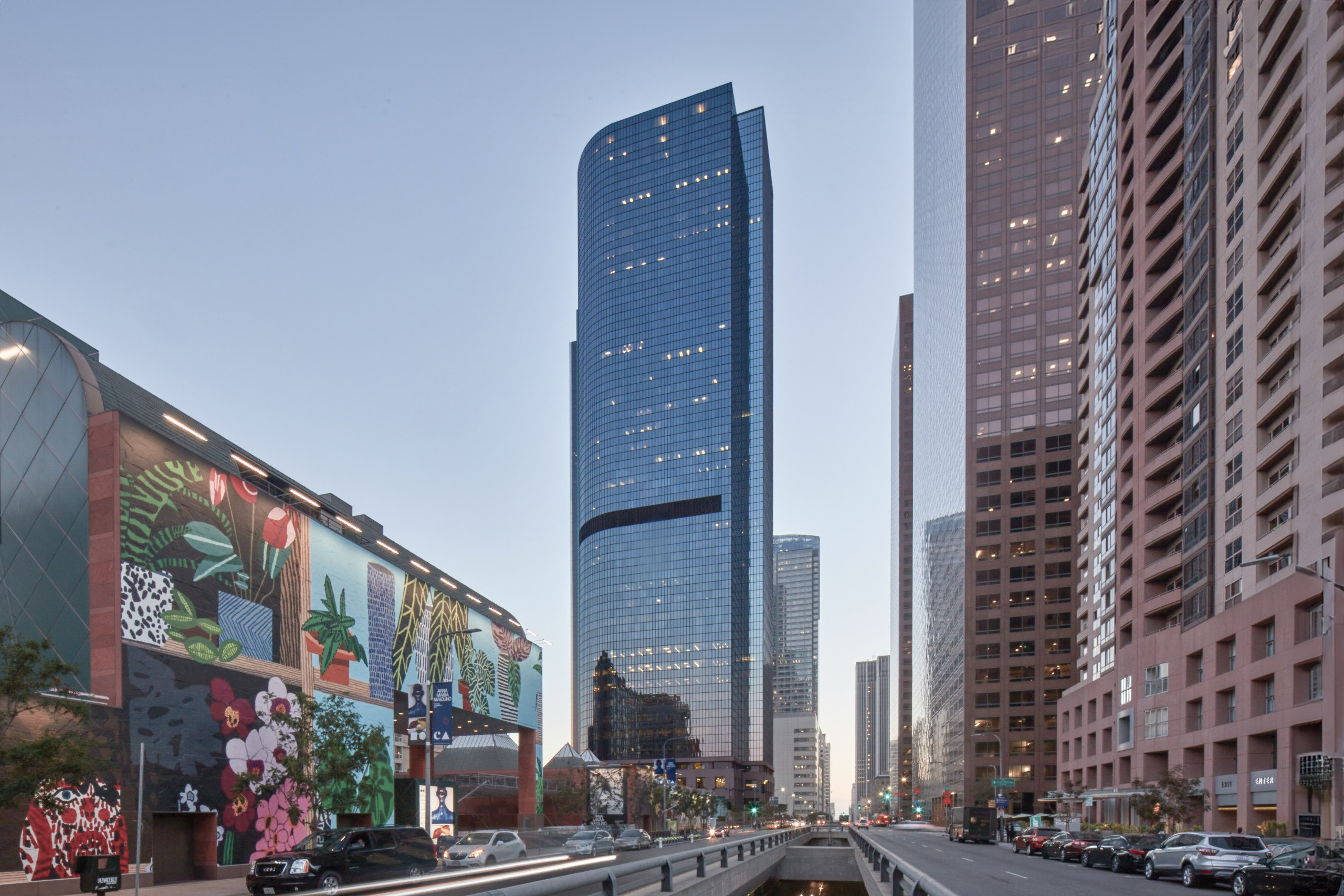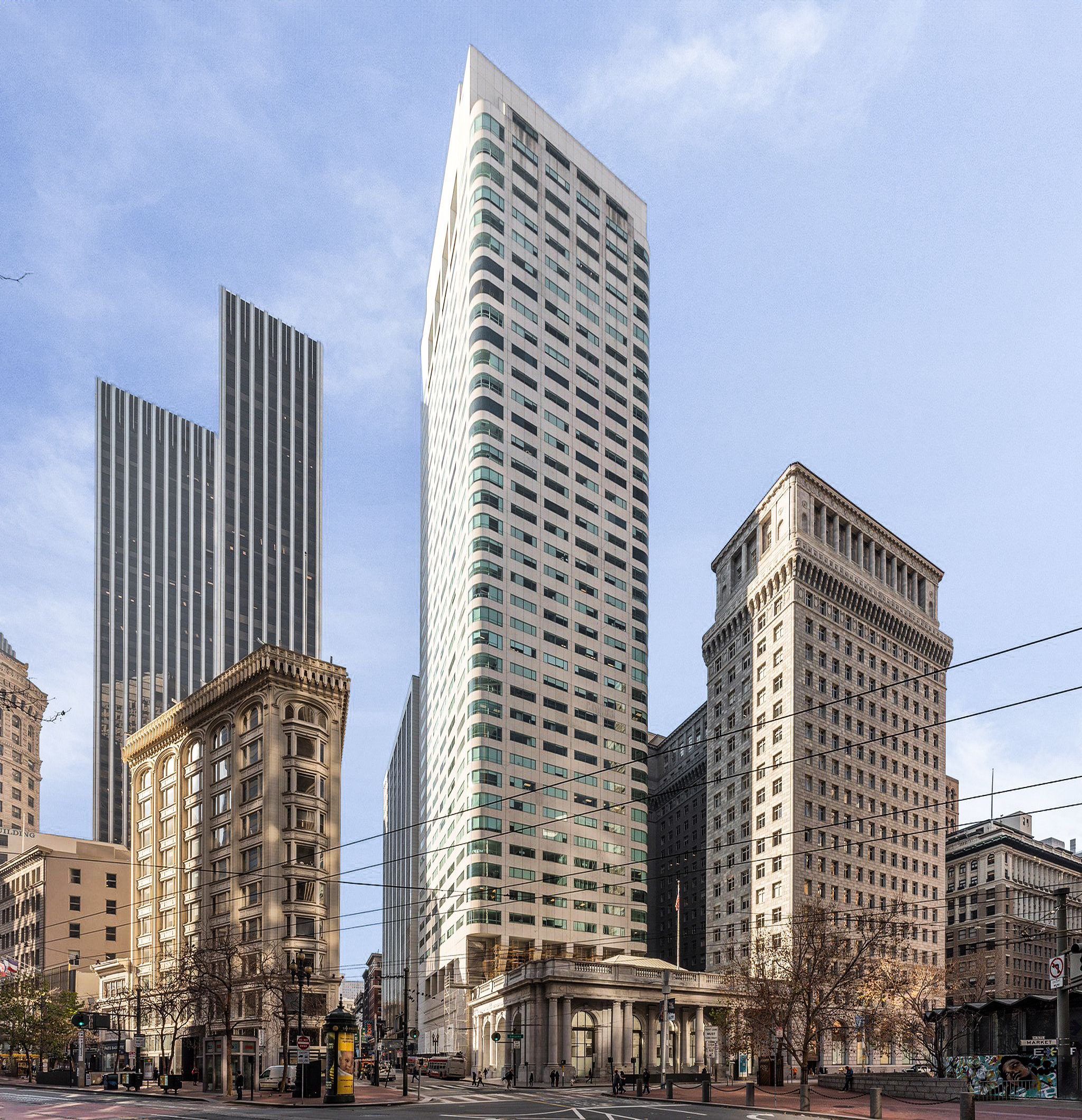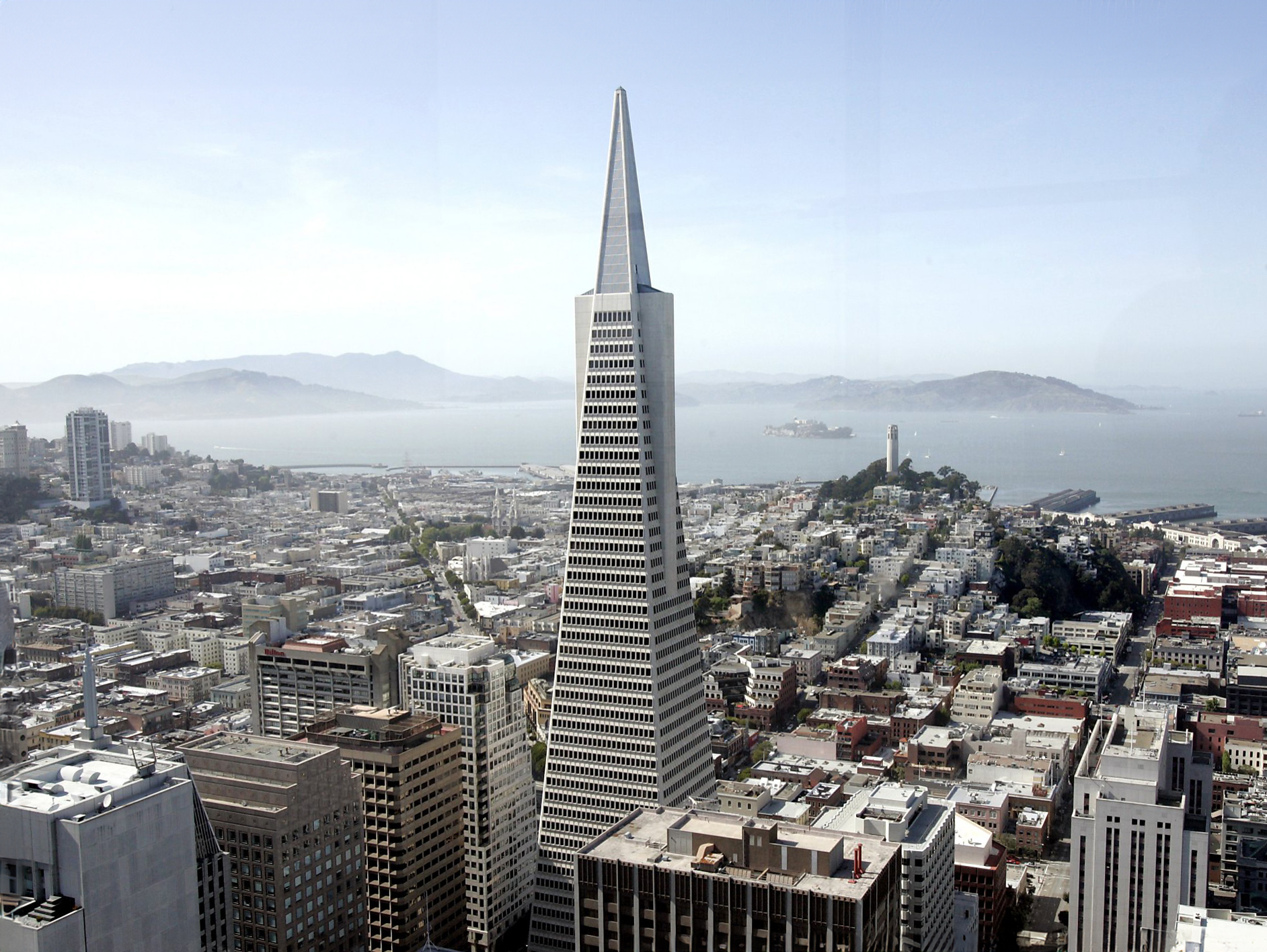The 611 Place Building is a Modern Style skyscraper designed by William L. Pereira, and built between 1967 and 1969 in Los Angeles, CA.
611 Place Building is not the only name you might know this building by though. It is common for companies to want to attach their names to iconic buildings when they move in, or for the general public to come up with nicknames, and this one is no exception. The building has changed names several times over the years, and is also known as:
- 611 West 6th Street from 1969 until this day.
- AT&T Center between 1983 and 2003.
- Crocker-Citizen Plaza between 1969 and 1983.
Its precise street address is 611 West 6th Street, Los Angeles, CA. You can also find it on the map here.
